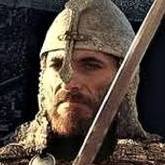PC Won't turn on, but Mobo and GPU LEDs are on
47 minutes ago, ElSeniorTaco said:
Your in the right direction

I'll leave it to you to try and decide what to do from here, see if good ol beer and gut feeling kicks in lol
Sounds like you might be able to try and figure it out on your own
But if you run into something odd or got questions or get stuck/need direction, don't be afraid to ask , I'm still around (hopefully, if i dont fall asleep)
Just keep in mind, the more thorough you are, the easier its going to be for you to identify the issue
Keep us updated, I am curious to see what you learn/find out
Problem solved, here's what happened.
So I went through the process of trying out each part individually. 2nd ram stick worked, GPU worked, then I got to the drives.
I connected the power and sata cable to the boot drive SSD, and the PC refused to turn on. I was dismayed by the thought of it being the boot drive, since that would mean re-installing a lot of stuff. So I skipped that one and tried the 2nd SSD, and the PC still wouldn't boot up. I was relieved that it wasn't the drives.
It was the cable that gave power to the drives. I assume the cable eventually degraded from being crammed up in my mess of terrible cable management. Luckily I had another SATA power cable laying around and I hooked it up to all my drives and it powered up and is working great right now! With some more cable ties I hope this doesn't happen again.
Thank you for pointing me in the right direction ![]()


.png.255947720031a641abdac78e663b681c.png)













Create an account or sign in to comment
You need to be a member in order to leave a comment
Create an account
Sign up for a new account in our community. It's easy!
Register a new accountSign in
Already have an account? Sign in here.
Sign In Now